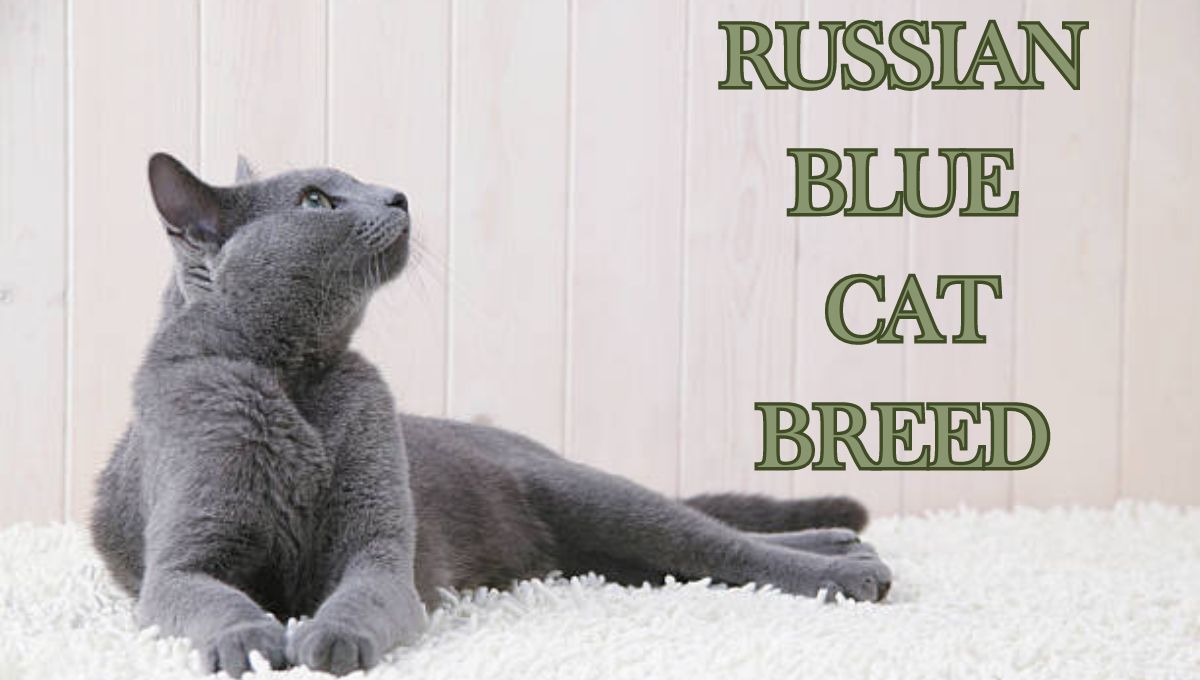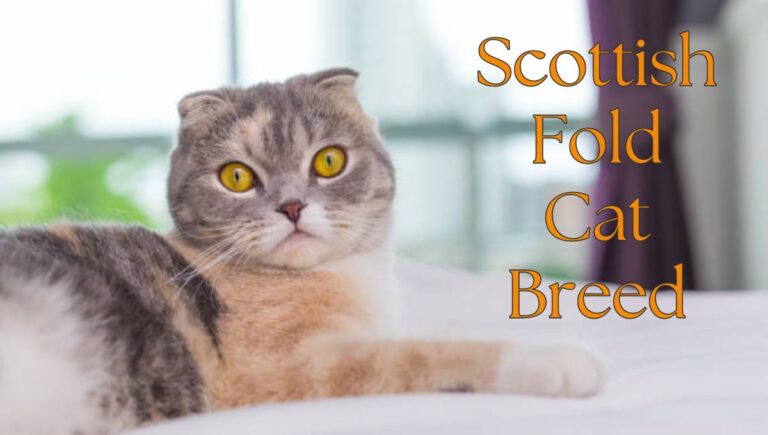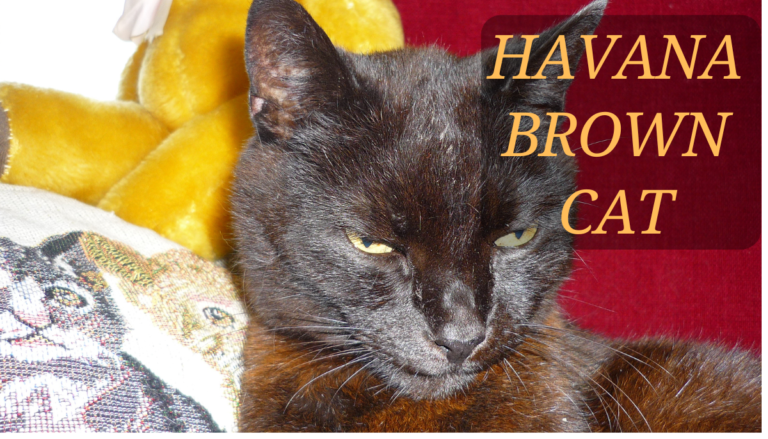Russian Blue Cat Breed
Introducing the elegant and enigmatic Russian Blue cat breed! Renowned for its striking appearance and captivating personality, the Russian Blue has enchanted cat lovers for generations. With its distinctive shimmering silver-blue coat, luminous green eyes, and graceful build, this breed exudes an aura of refinement and mystique.
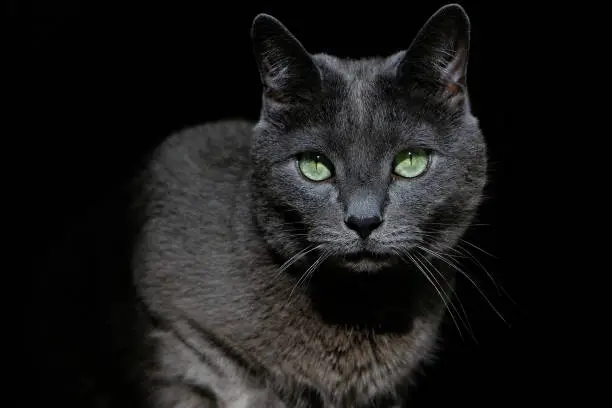
Beyond their captivating appearance, Russian Blues are beloved for their gentle and affectionate nature. They form strong bonds with their human companions and are known for their loyalty and devotion. Despite their aristocratic demeanor, they are playful and curious, delighting in interactive toys and games.
Whether lounging regally by the window or engaging in a spirited game of chase, the Russian Blue adds an air of grace and charm to any household. With their unique combination of beauty, intelligence, and affection, it’s no wonder they hold a special place in the hearts of cat lovers worldwide.
Table of Contents
I. Origin and History of Russian Blue Cats
Originating in Russia, the Russian Blue’s history is shrouded in intrigue and legend. Believed to have been companions to Russian czars and aristocrats, these felines were revered for their beauty and intelligence. Over time, they gained a reputation as symbols of elegance and sophistication.
Origins in Russia
- Speculated connection to the port city of Arkhangelsk.
- Believed that sailors and traders may have played a role in their development.
Emergence in Europe
- Gain attention in England and Northern Europe during the 19th century.
- Exhibited in cat shows, showcasing their beauty and regal demeanor.
Challenges During World War II
- Russian Blue population faced decline due to the upheaval of the war.
- Dedicated breed enthusiasts worked to preserve the breed.
Rise in Popularity
- Continued growth in popularity post-war.
- Captivated cat fanciers worldwide with their elegance and intelligence.
Modern Status
- Cherished companions in households globally.
- Admired for their stunning appearance, gentle nature, and intelligence.
Legacy
- Despite early mystery, Russian Blue’s journey to beloved breed status is evident.
- Testament to their enduring charm and allure.

II. Physical Characteristics of Russian Blue Cats
| Height | Medium to large size, typically ranging from 8 to 10 inches at the shoulder. |
| Weight | Adults generally weigh between 7 to 12 pounds, with males tending to be larger than females. |
| Life Span | Russian Blues have a relatively long life expectancy, typically ranging from 15 to 20 years with proper care. |
| Good with | Known for their affectionate and loyal nature, Russian Blues generally get along well with children, other pets, and even strangers. |
| Temperament | Calm, gentle, and reserved, Russian Blues are known for their sweet disposition and playful yet dignified demeanor. |
| Intelligence | Highly intelligent and curious, Russian Blues enjoy interactive play and can easily learn tricks and games. |
| Shedding amount | Moderate shedding year-round, but they are not considered heavy shedders compared to some other breeds. |
| Grooming | Requires minimal grooming due to their short, dense fur. Regular brushing helps reduce shedding and keeps their coat in good condition. |
| Exercise Needs | Moderate exercise needs; Russian Blues enjoy play sessions but also appreciate lounging and observing their surroundings. |
| Energy level | Moderately active, Russian Blues strike a balance between playful bursts of energy and relaxed lounging. |
| Meowing level | Prefer to communicate through soft, melodic vocalizations rather than being excessively vocal. |
| Drool amount | Typically not prone to excessive drooling, as they are a clean and tidy breed. |
| Coat/Texture | Short, dense double coat with a soft, plush texture that lies close to the body. |
| Colors | Characterized by their distinctive silver-blue coat color, Russian Blues may have slight variations in shade but generally have a uniform blue-grey hue. |
| Pattern | Solid-colored with no specific patterns, although they may have subtle tabby markings visible in certain lighting. |
While Russian Blues are renowned for their uniform blue-grey coat, kittens may have a slightly different appearance compared to adults, with their coat color developing and intensifying as they mature.
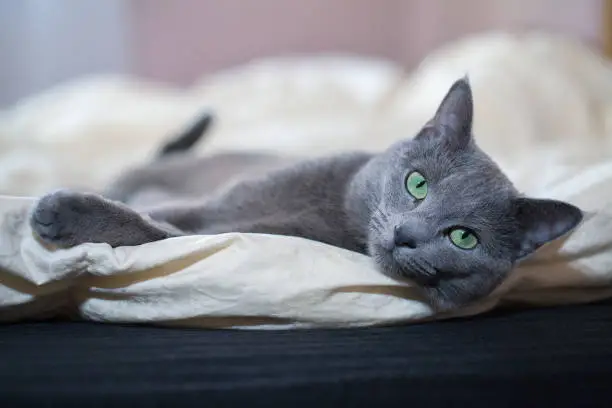
Russian Blue cats possess several distinctive physical features that set them apart from other breeds:
Head Shape:
- Russian Blues have a distinctive head shape that is often described as wedge-shaped, with a flat forehead and straight profile. This gives them an elegant and refined appearance.
Ears:
- One of the most striking features of Russian Blues is their large, pointed ears, which are set wide apart on the head. The ears are tall and erect, contributing to the breed’s alert and attentive expression.
Eyes:
- Russian Blues are renowned for their striking emerald-green eyes, which provide a beautiful contrast to their silver-blue coat. The eyes are almond-shaped and set slightly obliquely, giving them a gentle and intelligent gaze.
Tail:
- The tail of the Russian Blue is slender and tapered, in proportion to the body. It is moderately long, typically reaching to the shoulders when the cat is standing, and tapers to a fine point.
Build:
- Russian Blues have a muscular and athletic build, with a medium to large size. They are well-proportioned and balanced, with a graceful and elegant appearance.
These distinctive physical features contribute to the Russian Blue’s unique charm and allure, setting them apart as a breed of exceptional beauty and elegance.
III. Temperament and Personality of Russian Blue Cats
Russian Blue cats are renowned for their distinct temperament and personality traits, which make them beloved companions:
- Gentle and Affectionate: Russian Blues are known for their gentle and loving nature. They form strong bonds with their human companions and enjoy being close to them, often seeking out affectionate interactions.
- Reserved Demeanor: While they are affectionate, Russian Blues can also be somewhat reserved, especially around strangers. They may take some time to warm up to new people or situations but will eventually show their affectionate side.
- Playful and Intelligent: Despite their reserved nature, Russian Blues are playful and intelligent cats. They enjoy interactive play sessions and can quickly learn new tricks and games. Puzzle toys and interactive playtime are great ways to stimulate their minds and keep them entertained.
- Quiet Communication: Russian Blues are not known for being excessively vocal. They prefer to communicate through soft, melodic meows and chirps rather than loud or demanding vocalizations.
- Loyal and Devoted: Russian Blues are loyal companions who form deep bonds with their owners. They enjoy spending time with their human family members and often follow them around the house, providing companionship and affection.
- Adaptable: Russian Blues are generally adaptable cats who can adjust well to different living environments. They are equally happy in apartments or larger homes, as long as they receive plenty of love and attention from their owners.
- Independent: While they enjoy human company, Russian Blues also have an independent streak. They are content to entertain themselves when their owners are busy but will always appreciate attention and affection when it’s offered.
Overall, the Russian Blue’s combination of gentleness, intelligence, and affection make them wonderful companions for individuals and families alike. Their calm and loving demeanor, paired with their playful nature, endear them to cat lovers around the world.

IV. Care and Maintainance of Russian Blue Cat Breed
Caring for a Russian Blue cat involves specific considerations to ensure their health and happiness:
Nutrition:
- Provide a balanced diet formulated for indoor cats, focusing on high-quality protein and essential nutrients.
- Monitor portion sizes to prevent overeating and obesity, which can be a concern for this breed.
Grooming:
- Russian Blues have short, dense fur that requires minimal grooming.
- Regular brushing helps to remove loose hair and reduce shedding.
- Trim their nails regularly and clean their ears to prevent infections.
Veterinary Care:
- Schedule regular veterinary check-ups to monitor their overall health and address any medical concerns.
- Stay up-to-date with vaccinations, parasite prevention, and dental care.
Environmental Enrichment:
- Provide interactive toys, scratching posts, and climbing structures to keep them mentally and physically stimulated.
- Create cozy resting spots and hiding places where they can feel safe and secure.
- Rotate toys and provide new experiences to prevent boredom and enrich their environment.
Socialization:
- Russian Blues are typically affectionate and enjoy spending time with their human companions.
- Spend quality time interacting with your Russian Blue through play, cuddling, and grooming to strengthen your bond.
- Introduce them to new people, pets, and experiences gradually to build their confidence and social skills.
Exercise:
- While Russian Blues are not overly active, they still benefit from regular play and exercise to maintain their health and prevent boredom.
- Interactive play sessions with toys or feather wands are ideal for keeping them mentally and physically stimulated.
Mental Stimulation:
- Provide puzzle toys and treat dispensers to keep them mentally engaged and prevent behavioral issues.
- Teach them new tricks or provide training sessions to stimulate their minds and build their confidence.
By providing proper nutrition, grooming, veterinary care, environmental enrichment, socialization, exercise, and mental stimulation, you can ensure that your Russian Blue cat lives a happy, healthy life as a cherished member of your family.
V. Suitability of Russian Blue Cats
Russian Blue cats are generally well-suited for families and get along well with other pets. Here’s why:
- Gentle Temperament: Russian Blues have a gentle and affectionate nature, making them excellent companions for families with children. They are patient and tolerant, often enjoying the company of respectful children who treat them kindly.
- Sociable: While they may be initially reserved around strangers, Russian Blues typically warm up quickly and enjoy the attention of visitors. They are sociable cats who thrive on human interaction and can easily adapt to new people and environments.
- Compatibility with Other Pets: Russian Blues are known for their friendly demeanor and tend to get along well with other pets, including dogs and cats. They are not particularly territorial and can coexist peacefully with other animals, provided proper introductions are made.
- Playful Yet Calm: Russian Blues strike a balance between playful energy and calm demeanor, making them versatile companions for families. They enjoy interactive play sessions but are also content to lounge and relax with their human family members.
- Low Aggression Levels: Russian Blues are not known for aggressive behavior and are unlikely to engage in confrontations with other pets. They prefer peaceful interactions and are more likely to avoid conflict rather than instigate it.
- Easygoing Nature: Russian Blues are generally adaptable and easygoing cats that can adjust well to different living situations. They are not overly demanding and are happy to share their home with other pets, as long as they receive love and attention from their human companions.
Overall, Russian Blue cats make wonderful additions to families and households with other pets due to their gentle temperament, sociable nature, and compatibility with various living situations. With proper introductions, supervision, and care, they can thrive in multi-pet environments and become cherished members of the family.

VI. Adoption and Breeder Consideration for Russian Blue Cats
When considering adopting or purchasing a Russian Blue cat, it’s essential to take several factors into account to ensure a positive experience for both you and the cat:
Adoption Consideration :
- Shelter or Rescue: Consider adopting a Russian Blue cat from a shelter or rescue organization. Many purebred cats, including Russian Blues, end up in shelters due to various reasons, and adopting from a rescue can provide a loving home to a cat in need.
- Health and History: Inquire about the cat’s health and history. Ask if the cat has received veterinary care, vaccinations, and any necessary medical treatments. Understanding the cat’s background can help you provide appropriate care and support.
- Personality Match: Spend time interacting with the cat to assess its personality and temperament. Russian Blues have distinct characteristics, but individual cats may vary in temperament. Choose a cat whose personality matches your lifestyle and preferences.
- Home Environment: Ensure that your home environment is suitable for a Russian Blue cat. Consider factors such as space, safety, and potential hazards. Prepare a comfortable and secure space for the cat to adjust to its new surroundings.
Breeder Consideration :
- Reputable Breeder: If purchasing from a breeder, research and choose a reputable breeder who prioritizes the health and well-being of their cats. Look for breeders who are registered with reputable cat associations and adhere to ethical breeding practices.
- Health Screening: Inquire about health screening procedures for the breeding cats and kittens. Responsible breeders conduct genetic testing and health screenings to minimize the risk of hereditary health issues in their kittens.
- Socialization and Care: Ensure that the kittens are raised in a nurturing environment and receive proper socialization from an early age. Well-socialized kittens are more likely to develop into confident and well-adjusted cats.
- Contract and Guarantees: Review the breeder’s contract carefully and ensure that it includes provisions for health guarantees, return policies, and spaying/neutering requirements. A reputable breeder will stand behind their kittens and provide support throughout the cat’s lifetime.
- Visit the Cattery: Whenever possible, visit the breeder’s cattery in person to meet the breeding cats and assess the living conditions. A clean and well-maintained cattery is indicative of a responsible breeder who cares for their cats’ welfare.
Whether adopting from a shelter or purchasing from a breeder, it’s important to prioritize the well-being of the cat and make an informed decision based on your lifestyle, preferences, and ability to provide a loving and caring home.
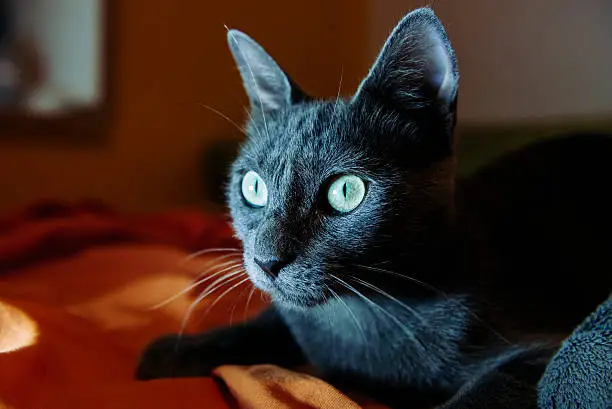
VII. Conclusion
In conclusion, the Russian Blue cat breed stands as a testament to feline elegance, intelligence, and companionship. With their striking silver-blue coats, captivating green eyes, and gentle demeanor, Russian Blues have captured the hearts of cat lovers around the world.
From their mysterious origins in Russia to their modern-day status as cherished companions, Russian Blues have left an indelible mark on the world of cats. Their gentle and affectionate nature makes them ideal companions for families, while their playful yet dignified demeanor adds a touch of grace to any household.
Whether adopted from a shelter or purchased from a reputable breeder, Russian Blue cats bring joy, love, and companionship to their owners. With proper care, attention, and affection, they thrive in their roles as beloved family members, enriching the lives of those fortunate enough to share their home.
In the world of cat breeds, the Russian Blue shines as a beacon of beauty, intelligence, and grace—a timeless symbol of feline elegance and devotion. As we celebrate the unique qualities of this remarkable breed, let us continue to cherish and care for these magnificent cats, ensuring that their legacy endures for generations to come.
FAQ on Russian Blue Cat Breed
Are Russian Blue cats hypoallergenic?
While no cat breed is completely hypoallergenic, Russian Blues are known to produce fewer allergens compared to some other breeds. Their short, dense fur and low shedding tendencies may make them more suitable for individuals with allergies.
Do Russian Blue cats require a lot of grooming?
Russian Blues have short, dense fur that requires minimal grooming. Regular brushing helps to remove loose hair and reduce shedding, but they generally do not require extensive grooming sessions.
Are Russian Blue cats good with children and other pets?
Yes, Russian Blues are known for their gentle and sociable nature, making them excellent companions for families with children and other pets. They typically get along well with other animals and enjoy the company of respectful children.
How active are Russian Blue cats?
Russian Blues have a moderate activity level. While they enjoy interactive play sessions and may have bursts of energy, they also appreciate lounging and relaxing with their human companions. Providing opportunities for play and exercise helps keep them mentally and physically stimulated.
What is the typical lifespan of a Russian Blue cat?
With proper care and attention, Russian Blue cats can live relatively long and healthy lives. Their lifespan typically ranges from 15 to 20 years, although individual cats may vary. Regular veterinary care, a balanced diet, and a nurturing environment contribute to their longevity.

